Mussolini versus the Satanists in Sicily
A journey into a delapidated haunted house in Cefalù
It may sound like a cliché, but Sicily is an island of extreme contrasts - fields of canola, prickly pear along the perimeters of mountains that reach to the sky, a very active volcano where an ancient blacksmith forges lightening bolts to Zeus. Sicily's population of around five million is equal to Melbourne's, my hometown. She’s not a large island.

Despite her stature you will, to this day, find plenty of east-coast Sicilians (like my folks) who have never travelled west to Palermo or Trapani. Mum reminds me, “they’re not like us, they have the mafia, they live on mountains, we’re more refined.”
This is not quite true, but something the west of Sicily did once have was the satanists of Cefalù. Which brings me to the reason I wanted to venture to the oceanside village on a recent trip. As someone who doesn’t vibe with the beach, it was an odd choice for a five day stay that proved to be one of the best experiences on the island. Jeff and I were greeted on our first night with a most epic thunderstorm that felt as if we were right in the clouds.
Founded in 4BCE by Greek colonists, Cefalù then followed the usual history of Sicilian capture and conquer - by the Romans, the Normans, the Ottomans, the Spanish Bourbons, the French, the mafia, and so on.1
It’s a stunning spot around 30 minutes from Palermo, on the Tyrrhenian Sea.
The real reason I wanted to go to Cefalù, other than seeing the incredible Cathedral built between 1131 and 1240 in the Norman style, was to visit the Abbey of Thelema, the temple founded by Aleister Crowley and Leah Hirsig in 1920.
The name was borrowed from François Rabelais’s ‘Gargantua and Pantagruel’ from the 16th century, where an Abbaye de Thélème is described as a sort of "anti-monastery" where people were "spent not in laws, statutes, or rules, but according to their own free will and pleasure".2 In fact, the motto for Crowley’s Abbey of Thelema was “Do what thou wilt shall be the whole of the Law.” Which is a dastardly play on the Wiccan motto of "An' it Harm None, Do What Ye Will".
Aleister Crowley was already a well known occultist at the turn of the 20th century. A prolific writer, magician, and philosopher, he founded the church of Thelema after a voice spoke to him while in Cairo in 1904. He recorded every word spoken by this voice and subsequently authored The Book of the Law. The Abbey of Thelema, founded in 1920 on the footsteps of La Rocca di Cefalù and with a stunning view over the Tyrrhenian Sea, was intended as a spiritual centre, where students would learn from its prophet, Aleister Crowley, and his acolytes. As a centre for magical devotion, students worked towards discovering their True Will. But honestly, Crowley was a sex-ctazed cult leader who encouraged animal sacrifice and other really horrible acts that you can look up yourself because I don’t have the stomach for it. His bedroom, named “la chambre des cauchemars” (“the room of nightmares”) was painted with explicitly erotic frescoes, and crazy monsters. It was frequently used for night initiations involving psychoactive drugs.
The Abbey, whose walls were covered in magical frescoes, was a playground for sex magic, invocations, drug experimentation, orgies, and learning. It was coming along, yes there were grumblings but the locals largely left them alone. Sicilian Catholics don't like to meddle with satanists.
However, the Abbey came to the attention of the media and authorities when, in 1923, one of the students died. Raoul Loveday, just 23, was said to have died because he drank the blood of a cat during a ritual. In fact, it was more likely that Loveday died from drinking water from a nearby mountain spring that Crowley warned his guests against. Loveday’s wife, Betty May, a bohemian singer and dancer, attacked Crowley and his set in an interview given to The Sunday Express in London in March 1923.
Later, in The Indianapolis Star, on 10 June 1923, the widow, Betty May said “with every day, my horror and repulsion grew”. The Star downplayed the original account, given anonymously by May to the Sunday Express.
Over on the mainland, when Italian Prime Minister Benito Mussolini learned of the foreigners, he took a moment away from trying to enlarge the Italian living room with a mission of invasions. Mussolini was having none of it, suggesting that the group brought the island into disrepute, and sent Crowley and his followers packing in 1923.
The Abbey in Cefalù was abandoned and the murals whitewashed by freaked-out locals. It sits there, unloved, unvisited by only the extreme of Crowley's followers.3
In 1955, underground filmmaker, Kenneth Anger and famed sexologist Alfred Kinsey visited the Abbey to study the murals. He spent a summer restoring the artwork and made a film of his visit that is now said to be a lost film. A feature in the Picture Post is all that remains of his visit.
Once a talented writer, Crowley, the self-proclaimed Beast, famously called The Wickedest Man In The World, died in 1947 in poverty, probably a junkie, and largely alone.
But wait, he was not forgotten by John Lennon.
The 60s saw a bit of resurgence in the occult, especially among rock musicians. Led Zeppelin’s Jimmy Page is a collector of Crowley's books and ephemera, and purchased what was once his mansion, Boleskine House, in the Scottish Highlands. And look guys, the house is haunted. It caught fire twice under Jimmy Page’s ownership. Today, after much restoration, Boleskine House is said to be open to the public. Let me know if you visit.
When I visited Thelema in 2022, the place was absolutely derelict. I thought it would be a mecca for occultists and goths, with a sign that read “satanists, this way.” But no; Jeff and I were completely alone. There is no entrance, you have to slide down a shortish ravine, holding onto shrubs and remembering that the way out is back up. Inside, Jeff received two demonic scratches for his troubles.
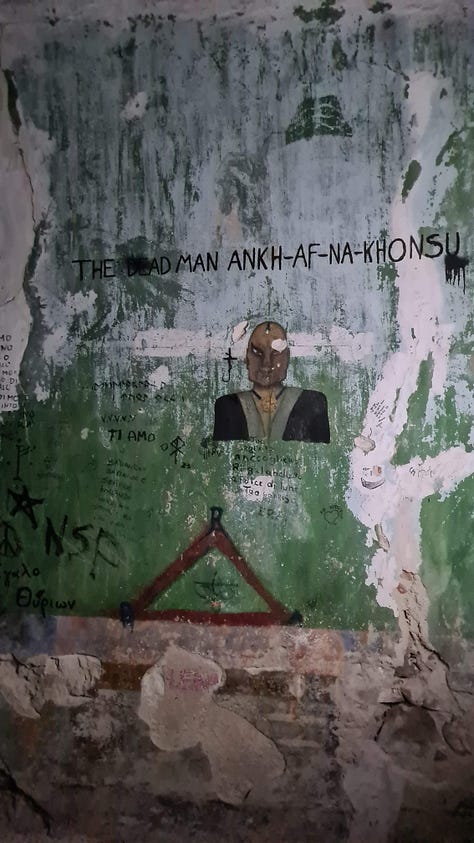

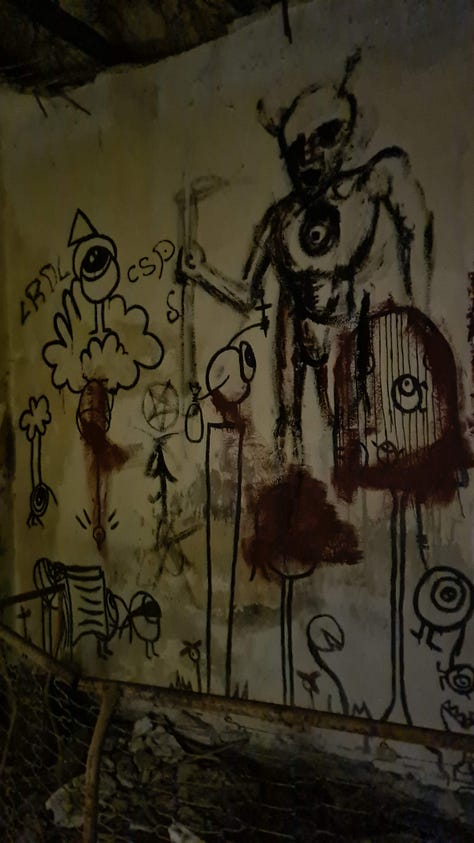

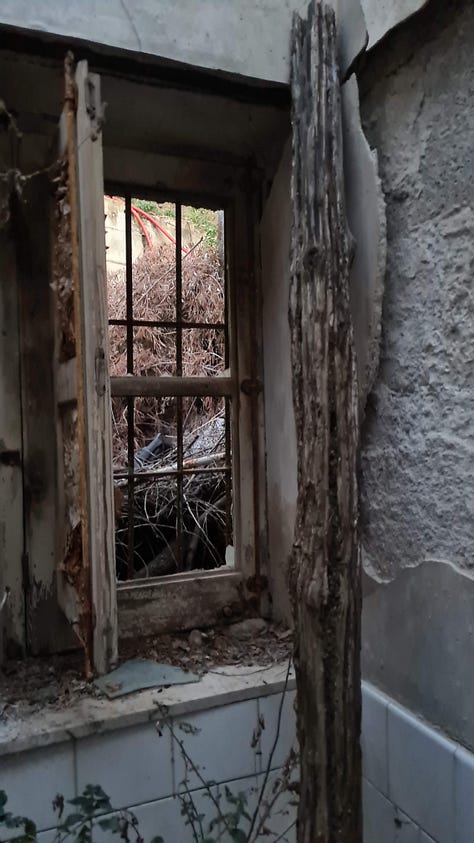
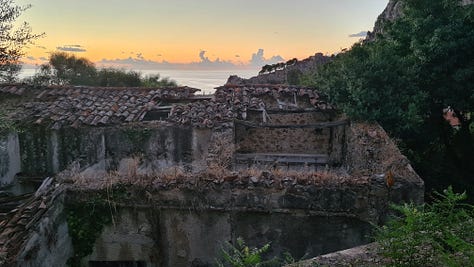
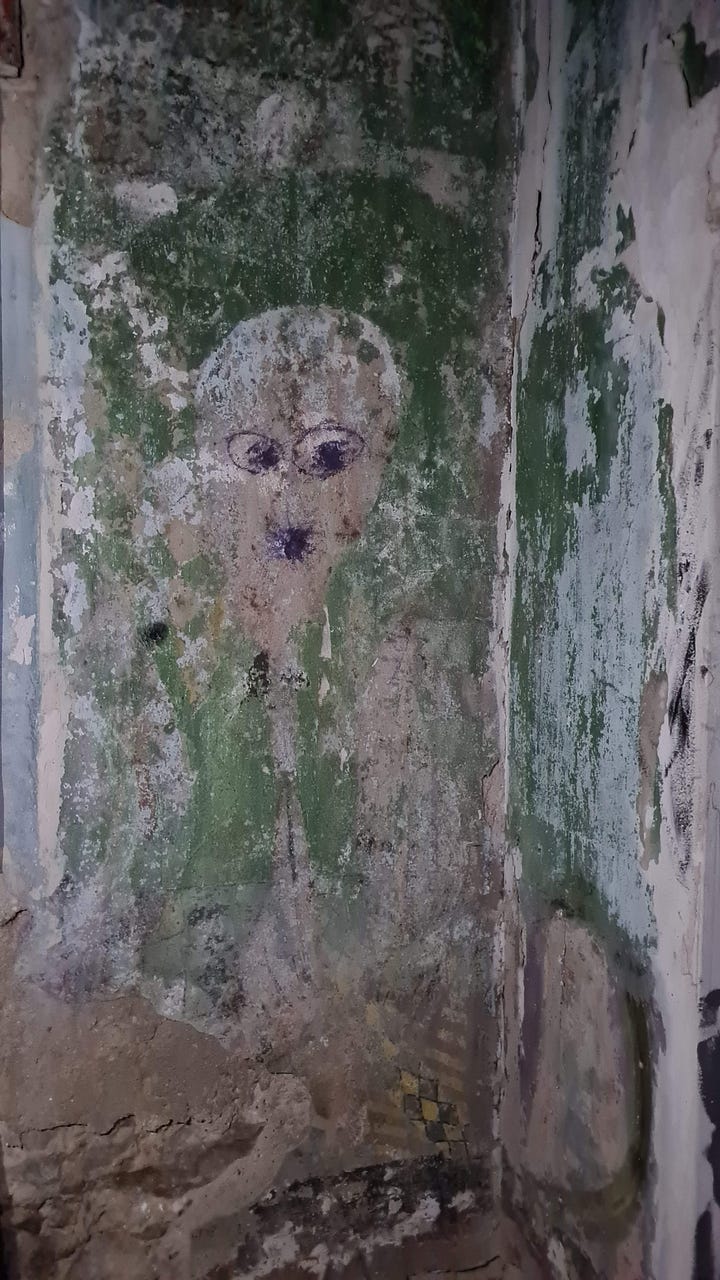
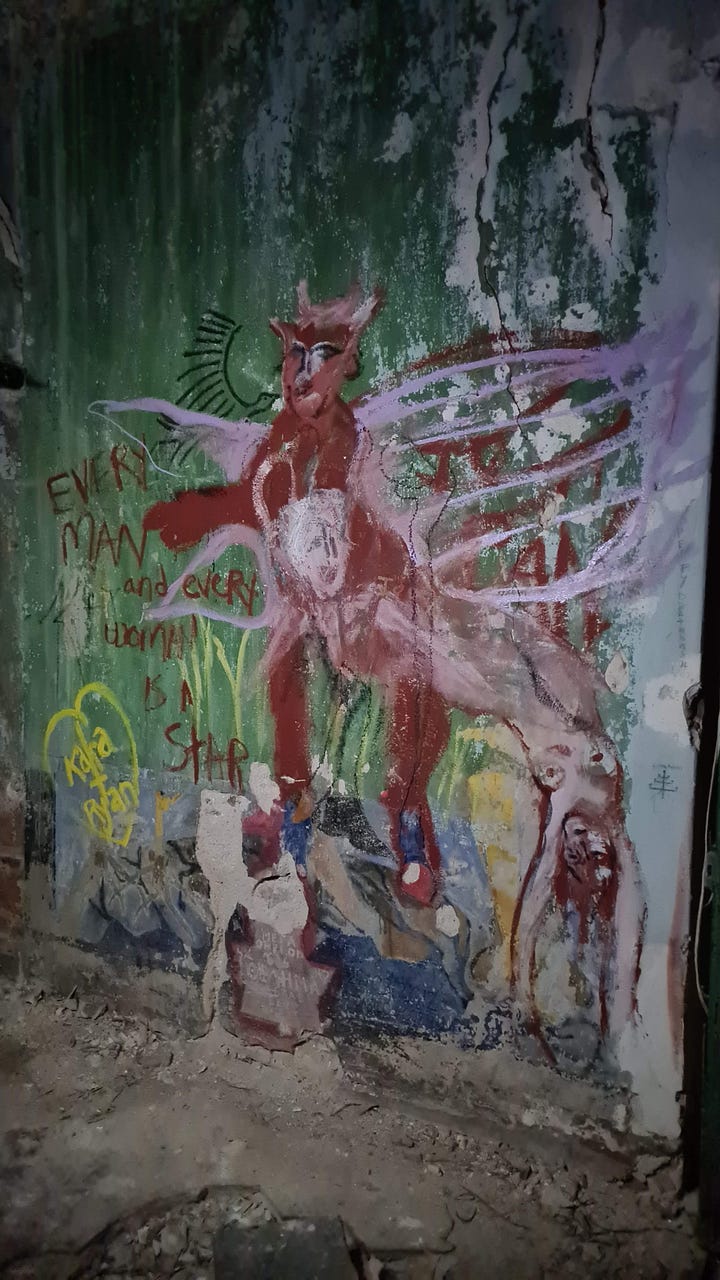
As you can see from the photos, the house is in complete disrepair. I don't recommend it as an urbex destination unless you are experienced. You can tell how experienced Jeff and I are by the shorts and sandles we're wearing.
We walked on decades old decay, crumbling roof, weeds and who knows what else. It's been tagged and trashed, of course. But it's mostly nature who has taken it. Today's locals still won’t touch it because they think it's cursed, which, let’s face it, it probably is. It did not feel good to be in there, especially as the sun started to dip, and a teensy panic set in (darkness is my kryptonite).
Still, what is left of the murals made it worth the scratches, the ungodly uphill hike, and the rabies I probably got from a ginger cat.
This video, from 2012 is not mine but it’s creepy AF.
For a terrific history of Sicily, written for regular people, check out
and his excellent book, The Invention of Sicily, and Peter Robb's Midnight in Sicily. Both terrific works.Project Gutenberg, https://www.gutenberg.org/files/1200/1200-h/1200-h
No, I am not a fan of Crowley's. But I do love strange abandoned places. One day I'll tell you about the abandoned Sicilian village where wild peacocks roam.





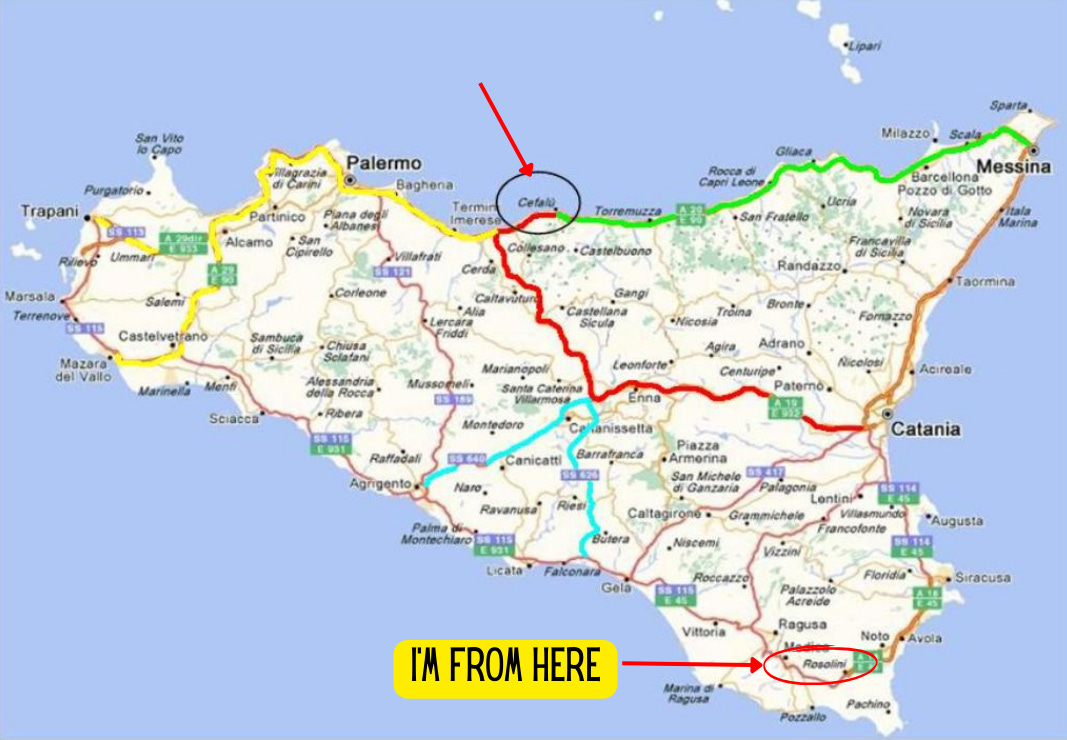
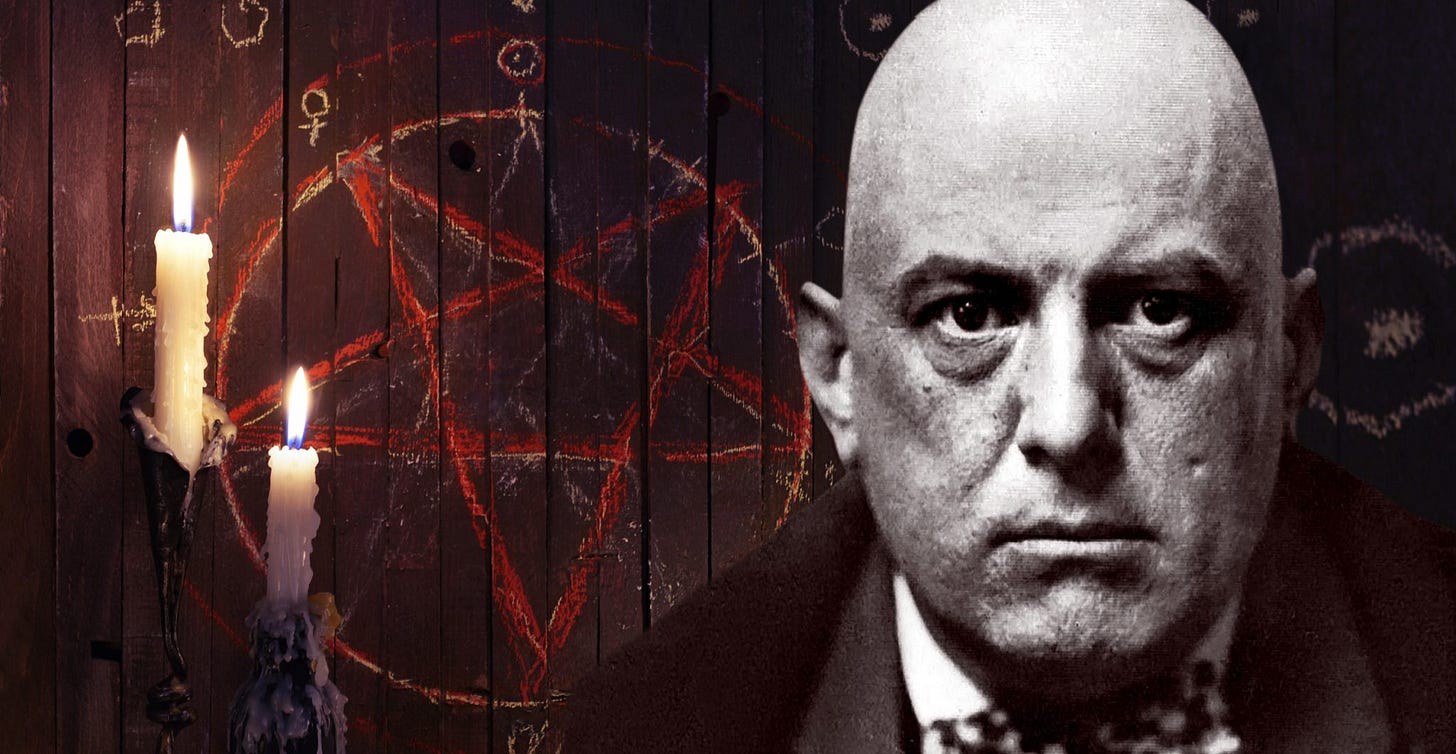
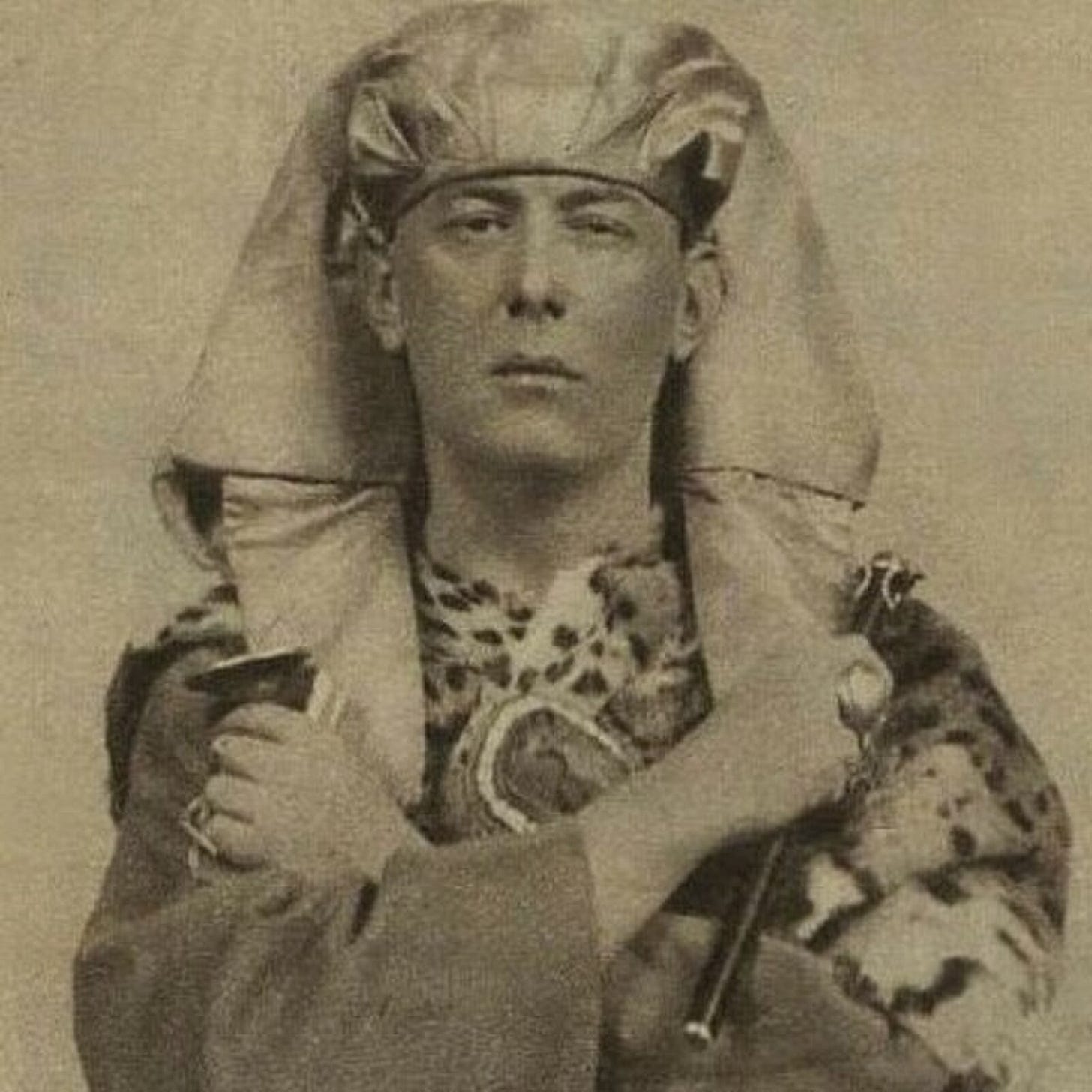

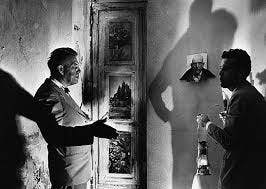
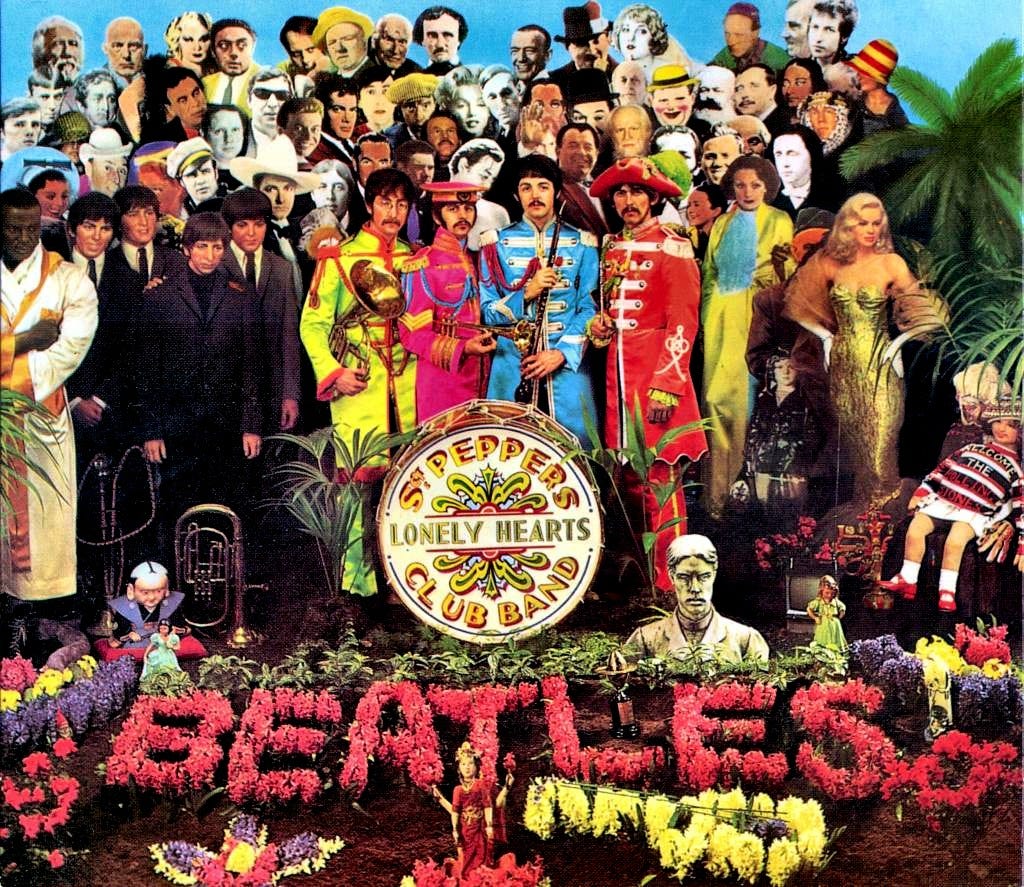

Fascinating article. When visiting old churches and cathedrals I get a sense of the centuries of worship that has taken place within their walls. It's as if the energy lingers, so I imagine the same might be true of a place where dark rituals have taken place. I can see how it would take a lot of courage to enter a place like that. The video looked a bit like the Blair Witch Project!
Salve! Like you I have no interest in Crowley at all and find his whole shtick just repellent, and silly. But, also like you, I love Sicily and, also, strange abandoned places. I really liked the point you made about the difference between the east and west coasts…the west feels so very different, more edgy, more undercurrents, than the east. I know Cefalù…but, thankfully, I don’t know Thelema…and don’t want to.
Interesting that Kenneth Anger - of the weird, and just as silly as Crowley, Scorpio Rising fame - had been there in 1955.